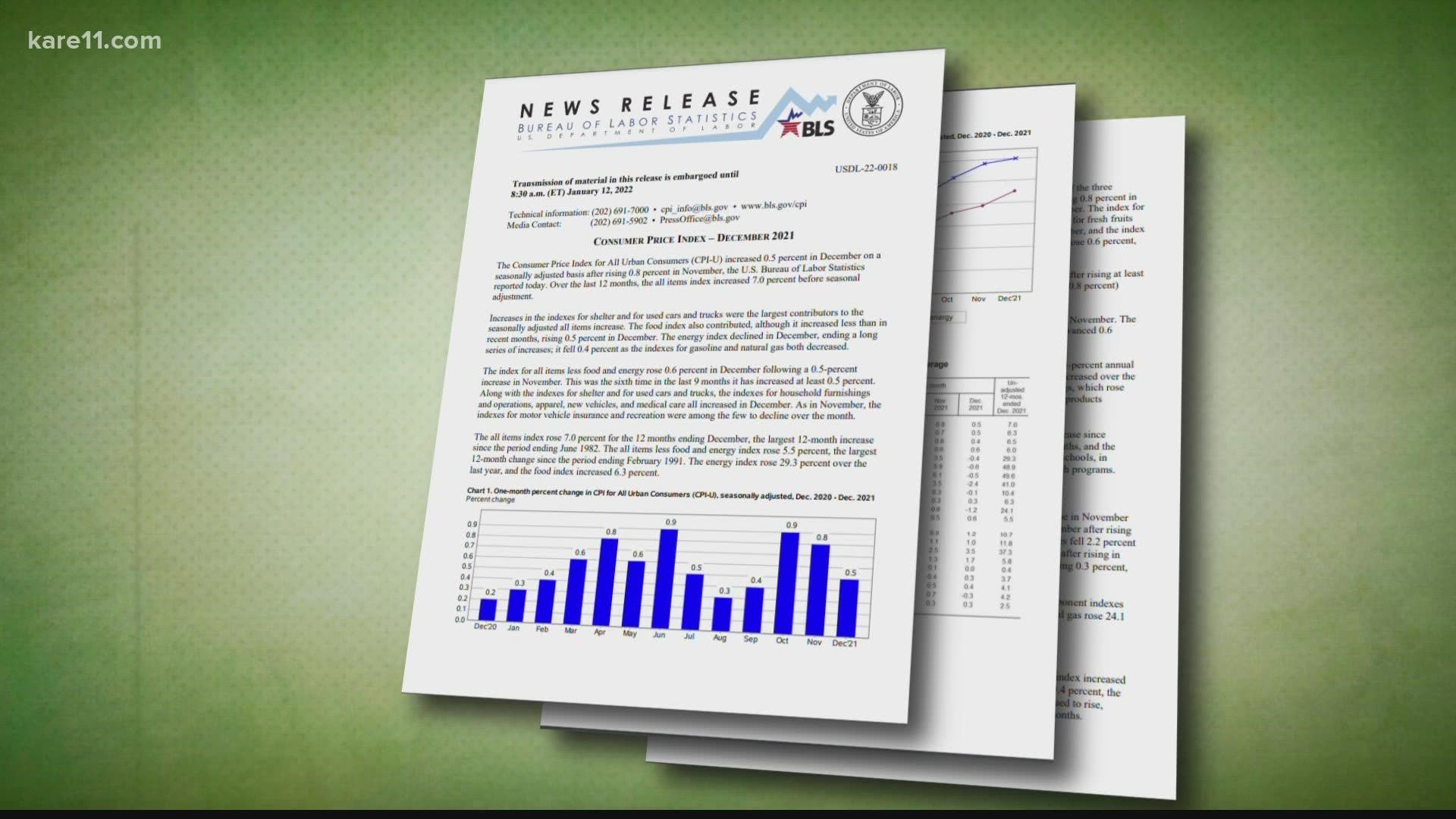MINNEAPOLIS — In the beginning, the high prices of goods came as a surprise, but many accepted it due to the start of the pandemic.
Now, the monthly release of the Consumer Price Index by the Labor Department comes as a blow to brace for, as this month's report shows consumer prices jumped 7% in December 2021, compared to December 2020 — the biggest year-over-year inflation since June of 1982.
One of the biggest dents in consumers' pockets: food prices.
The food index increased 0.5% in December, with categories like fruits and vegetables rising 0.9% over the month. Fresh fruit, specifically, increased 1.8%. Dairy products went up 0.7%, bakery products were up 0.4% and other food went up 0.6%.
And while the beef (-2%) and pork (-0.8%) index came down a little this month, meats, poultry, fish and eggs rose a total of 12.5% over the year, which may explain why your grocery bills seem to just get higher and higher.
Another big jumper turned out to be used cars and trucks, which went up to 3.5% after an increase of 2.5% back in November and October.
The apparel index also went up 1.7% over the month, apparently its biggest increase since January of 2021.
The sticker shock and its longevity have taken Minneapolis Fed President Neel Kashkari by surprise.
"Right now we're seeing obviously very high inflation, much higher than I expected, and it has lasted longer than I had expected," Kashkari said in a St. Paul Area Chamber meeting. "The key question is, how long is it going to last?"
Kashkari said there's tension on both ends of the rope, with demand still high after consumers rerouted much of their pandemic money and interest towards goods instead of services.
On the supply side, remaining supply chain and labor force issues are still gumming it up.
"That boost of excess demand is going to go away unless Congress does something more that we didn't expect," he said. "The question then is, 'When does supply chain start to recover?' And a big area of uncertainty we're focused on is, 'When will all the workers return?' So the headline of unemployment is falling; we're at 3.9%, which most of the time you say that's a good labor market, but we're still four, five million jobs short of where we should be had there been no pandemic."
And key players in the supply chain, including anyone from long-haul truck drivers to child care providers, are still coming up short.
"Generally speaking, schools are far more reopened than they were nine months ago or last spring," he said. "We thought that would help families go back to work — it's helped on the market — but we have not seen this big uptick in labor supply. And I think a lot of people are still nervous about COVID, nervous about the variant, and worried about going back to in-person services."
Watch more Breaking The News:
Watch all of the latest stories from Breaking The News in our YouTube playlist:

